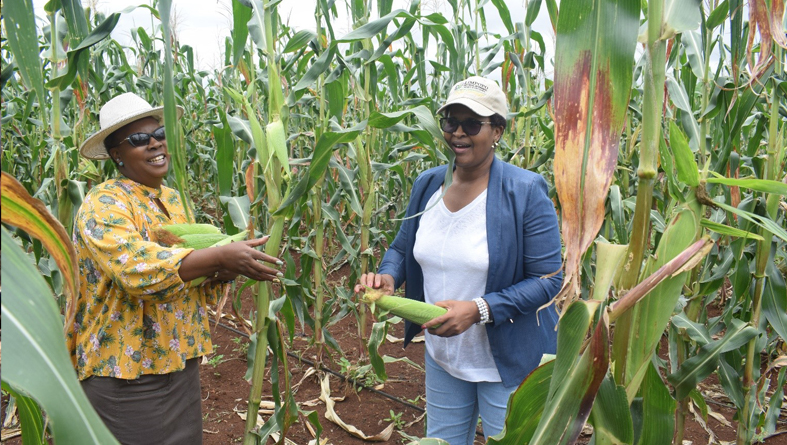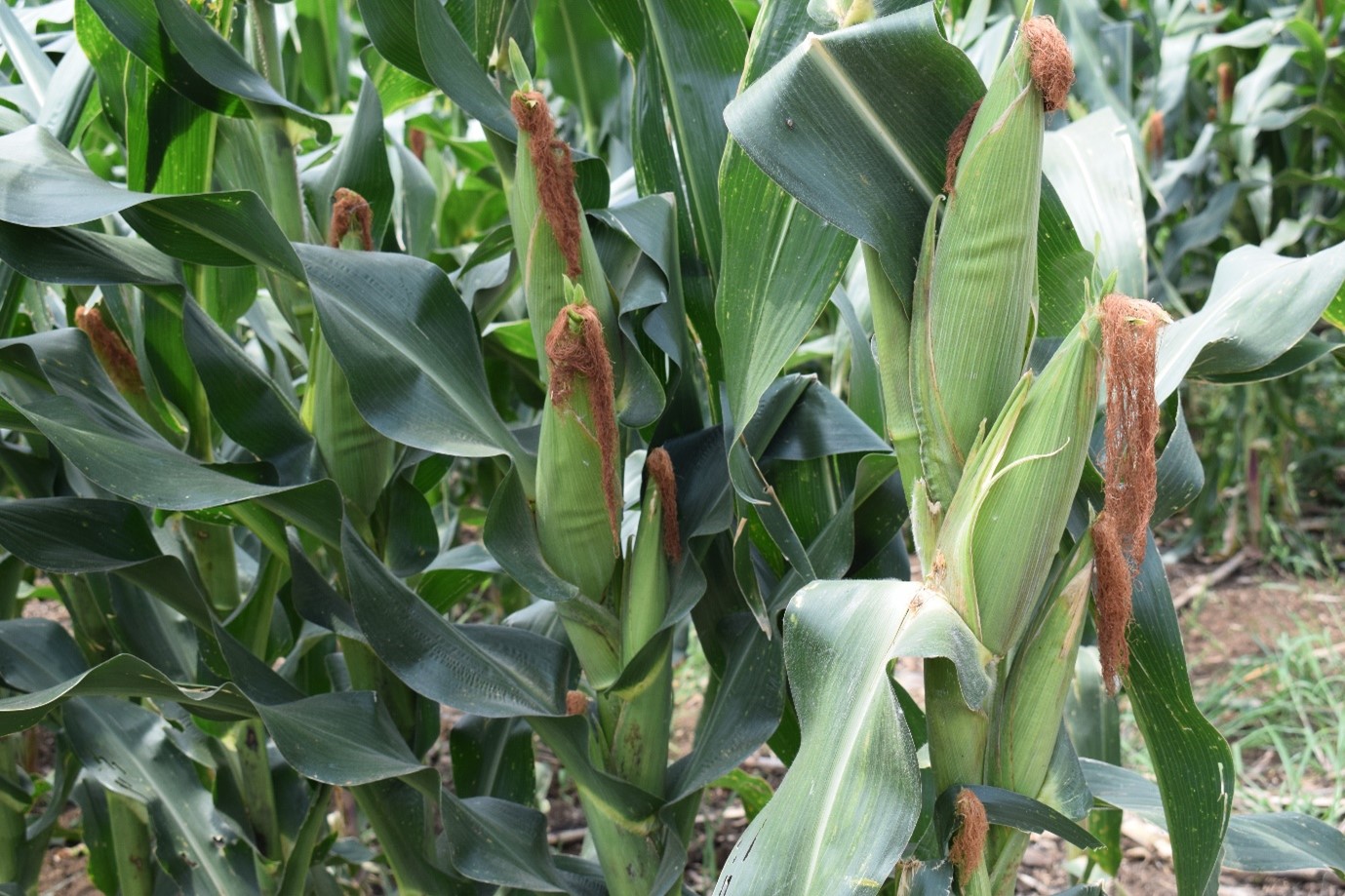By Matsobane Manaka

Nontokozo Zwane (Deputy Director: Agric local office in Greater Tzaneen Municipality) and Jaqueline Maisela (Head of Department of Agriculture and Rural Development) at Mhlarhi project, Naphuno during farmer register drive
Maize growers under dry land who planted around late December / early January received good rainfall which is unusual and often regarded as risky with prediction of low yields. This is despite the fact that excessive rain causes havoc resulted with floods in some part of South Africa.
The common practice of maize planting season under rainfed situation is between October and November because of the good early rain of over 50 mm. Late planting is risky as the crop may likely suffer not only from drought stress, but pests and disease infection such as stalk borers and maize streak viruses respectively.
The production of maize (white/yellow) in South Africa is dominant in comparison to other food crops. Almost 90% of maize is planted on dry land area and the remaining 10% is under drip, sprinkler or flood irrigation. This is due to high dependency on summer rainfall and with the advantage of warm climatic conditions in the province.
White maize is one of the staple foods mainly consumed as pap or porridge if processed in many households as compared to yellow maize that is used for poultry and animal feeds.
Like other crops, the population of maize have many ordinary and hybrid cultivars that differ in size, shape, yields and usage. Successful production of maize depends on various forms ranging from preparation of soil, variety selection, fertiliser, plant spacing, and weed controlling and spraying applications, among others.
Common soils (carrying a pH of between 5.0 to 7.0) in which maize may be grown include Hutton (Hu), Clovelly (Cv), Bonheim (Bo), and Bainsvlei (Bv), and these occur in varying levels in all the districts of Limpopo Province. But soil testing through laboratory is an important step to take to establish the suitable seed variety and fertiliser for the soil.
The soils must be well fertilised with manure as an excellent source of nutrients including nitrogen, phosphorus, potassium and Zink. The soils must be well drained to accommodate the deep size of maize seeds during planting season of the required rainfall.
Due to inconsistency of summer rainfall particularly in dry areas, it is important for maize growers to employ rain harvesting techniques that will contain optimum moisture such as wet ripping, mulching, potholing and tied ridging. Moreover, it is safe however, to plant earlier with the right maize seed hybrid armed with the right fertiliser and manure. That will improve the production yields, quality and resulted with the improved livelihood.


